Affiliate links on Android Authority may earn us a commission. Learn more.
OPPO F11 Pro review: Head-turning hardware
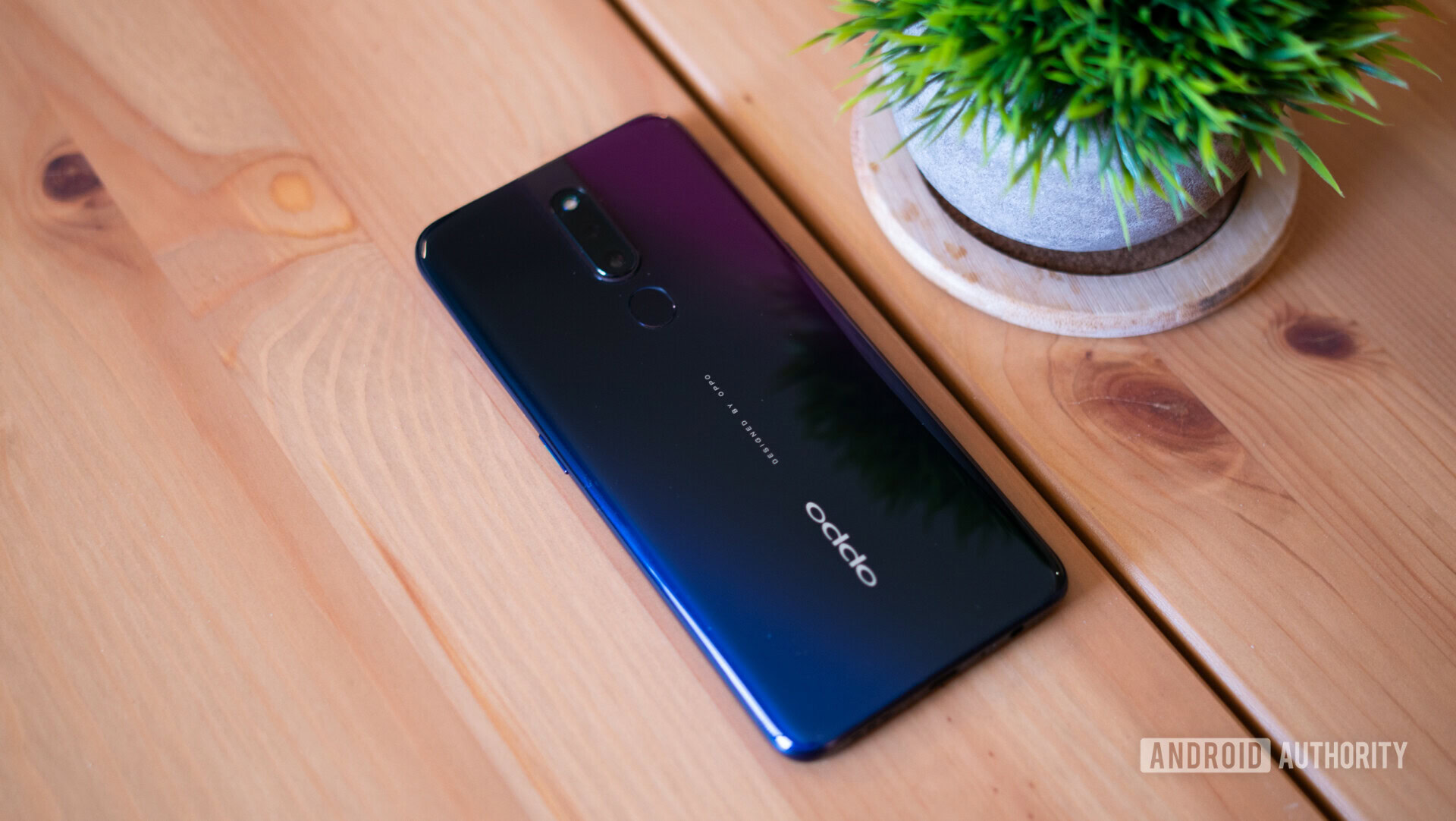
I've been using the OPPO F11 Pro for review over the course of a week. The phone was tested in the U.S. on T-Mobile's network. My OPPO F11 Pro review unit is running on the February 5 security patch and software version CPH1969EX_11_A.03.
With the announcement of the F11 Pro, OPPO looks to carry the momentum they built in 2018 into 2019. OPPO made waves last year with phones such as the Find X and R17 Pro, and the F11 Pro looks to be its next attention-grabber. The OPPO F11 Pro is equipped with a 48-megapixel camera, a large 4,000 mAh battery, a pop-up selfie camera, and a near bezel-less screen with no notch.
The phone sounds impressive on the hardware front, but how does it function in the day-to-day? This is our OPPO F11 Pro review.
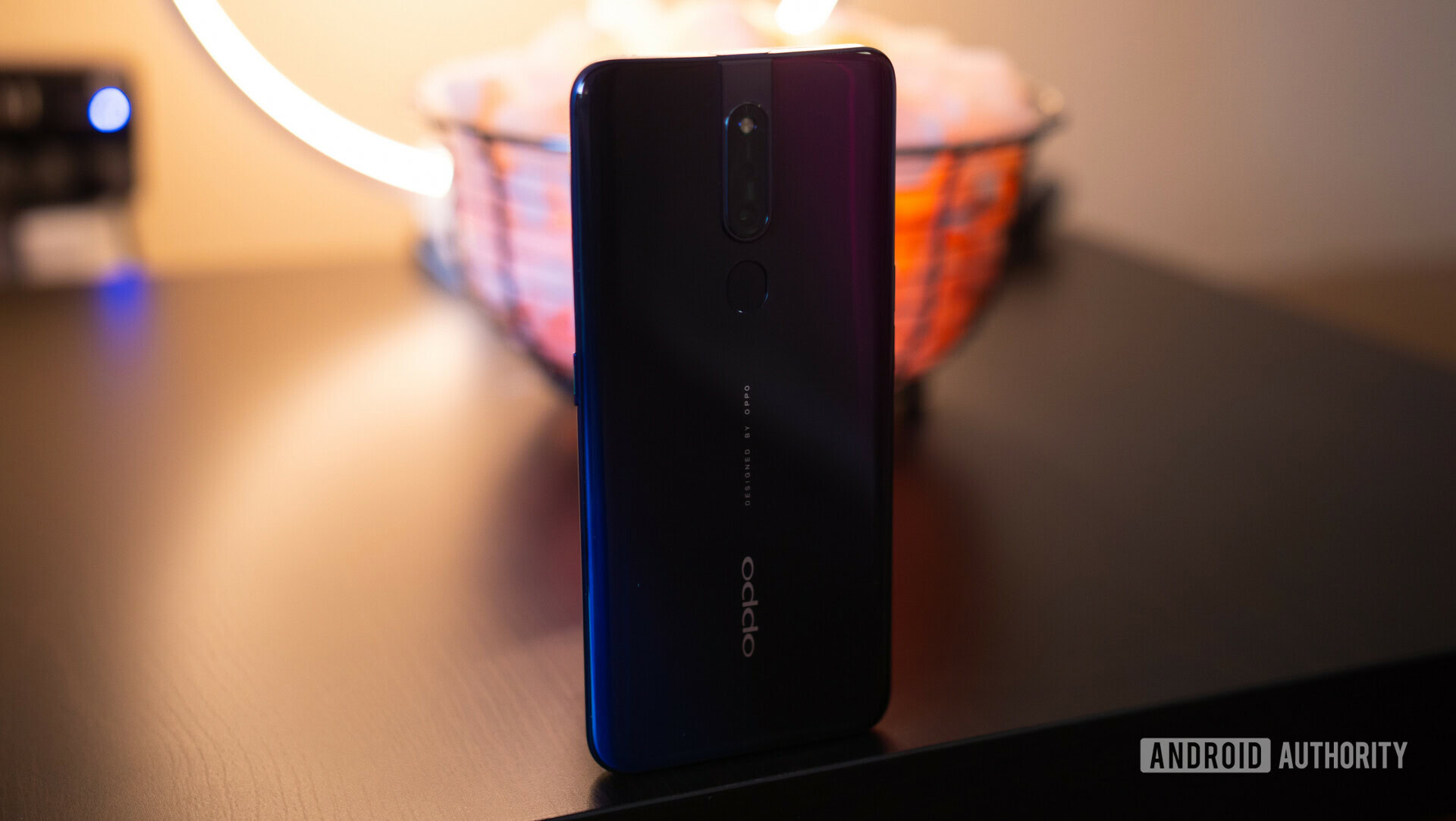
Design
OPPO has done some amazing work with gradient colors in many of their previous devices and Thunder Black is another stunning combination of colors.
If you’ve been paying attention to OPPO’s recent portfolio of smartphones, there’s no denying that they’ve been making some of the most attractive smartphones on the market; the F11 Pro is no exception. The OPPO F11 Pro has the all too familiar glass sandwich design, with a metallic frame. What makes the F11 Pro gorgeous to look at is the gradient colored backing. The phone comes in two color options: Thunder Black and Aurora Green.
Our OPPO F11 Pro review unit is the eye-catching Thunder Black and photos don’t truly showcase how amazing this color looks. It’s a triple-color gradient that beautifully fades from a purplish red to black and then to blue. OPPO has done some amazing work with gradient colors in many of their previous devices and Thunder Black is another stunning example.
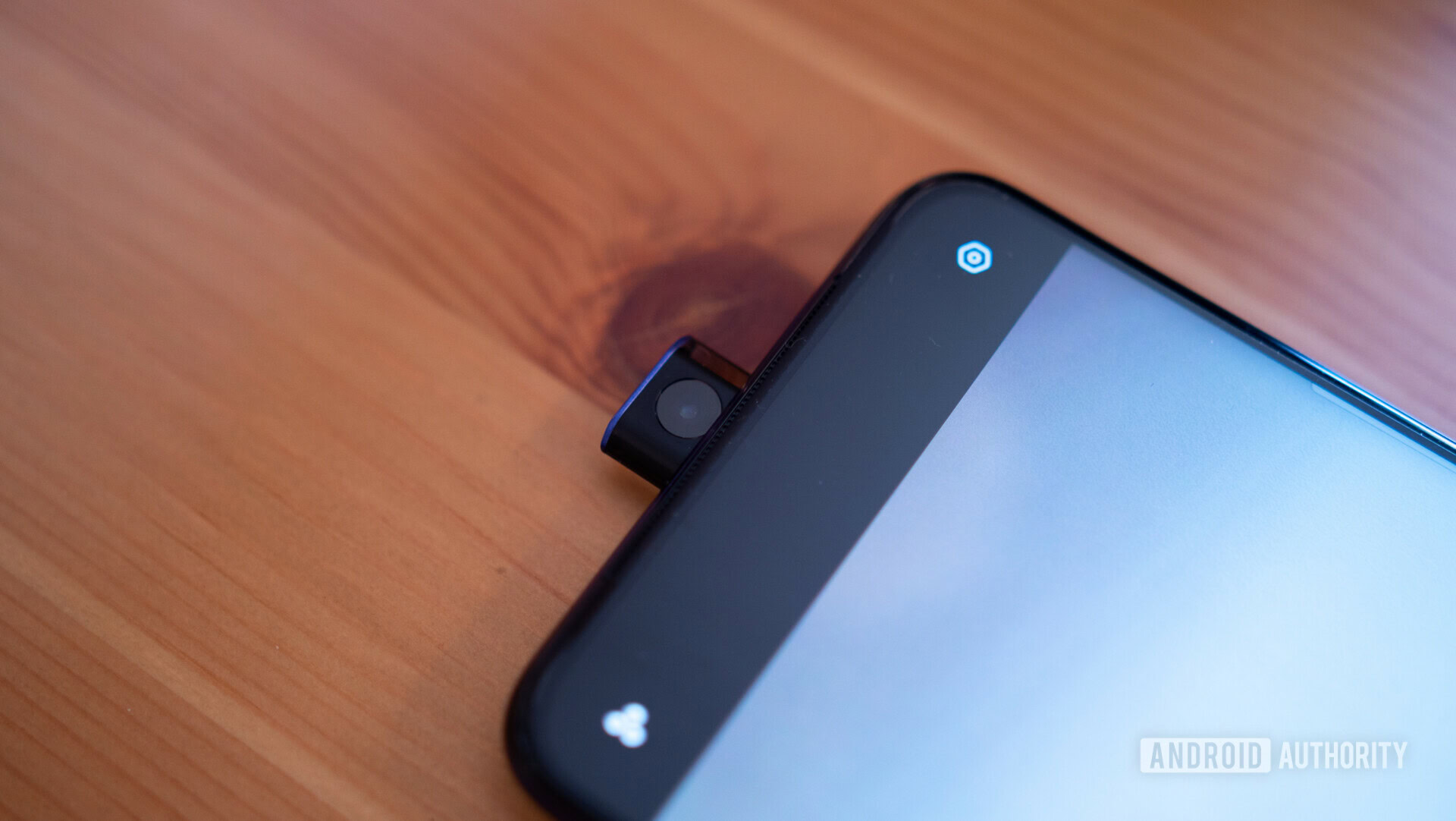
Perhaps equally as unique to the F11 Pro’s design is the pop-up selfie camera, though this isn’t the first time we’ve seen a motorized pop-up camera in a smartphone. While the technology still isn’t commonplace, we saw something similar on the OPPO Find X and the vivo Nex. We’ve also yet to see a smartphone with a pop-up camera make its way to the United States, although this could potentially change with the OnePlus 7.
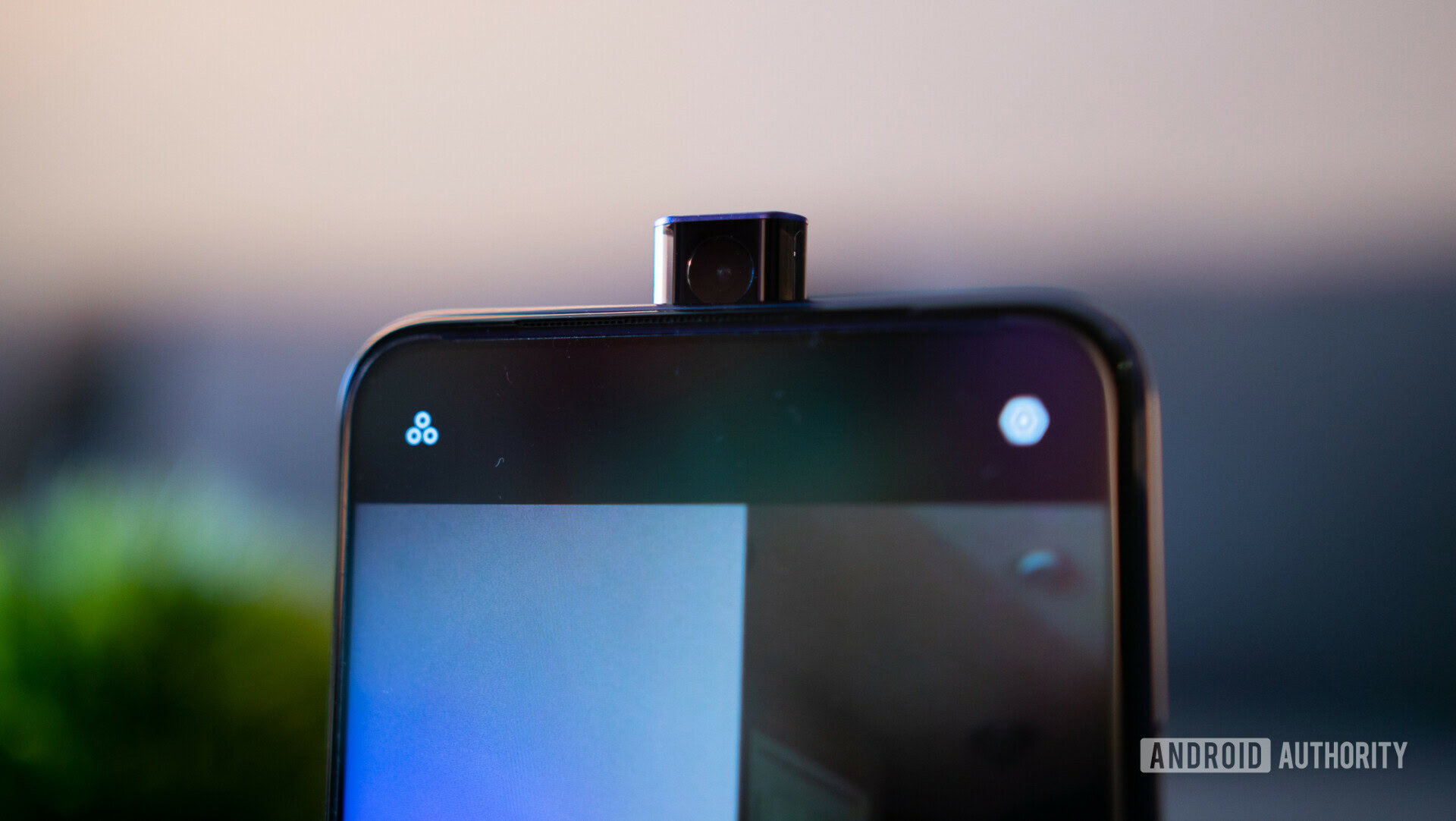
OPPO has centered the pop-up camera on the F11 Pro to create a sense of symmetry to the phone’s design. The housing surrounding the front-facing camera is also transparent, which gives it this almost prism-like appearance. The camera pops up automatically when using the camera app or any other app that takes advantage of the front camera, such as Snapchat. It will retract when you exit the app. You can force the camera back down too, but you probably shouldn’t.
In my week of testing the pop-up camera has worked flawlessly, but only time will tell how long this camera will remain functional under daily use. Hardware failure will be a huge concern and having such a complex moving part also prevents the F11 Pro from being water resistant. We’ll talk more about the front-facing camera in the camera section of our OPPO F11 Pro review.
In an era when smartphones are all starting to look the same, it's the little touches that can go a long way in making a smartphone stand out.
The rest of the OPPO F11 Pro’s design isn’t all too different from other smartphones on the market, but it’s a great-looking device regardless. An OPPO logo and “Designed by OPPO” are printed on the backside. Otherwise, the device is clean of any branding. The corners are rounded and sides are tapered, giving the phone a sleek appearance and more comfort in the hand. I also appreciate some of the more subtle design touches, like OPPO’s signature crescent arcs on the top and bottom part of the frame and the green accent on the power button. In an era where smartphones are all starting to look the same, it’s the little touches that can go a long way in making a smartphone stand out.
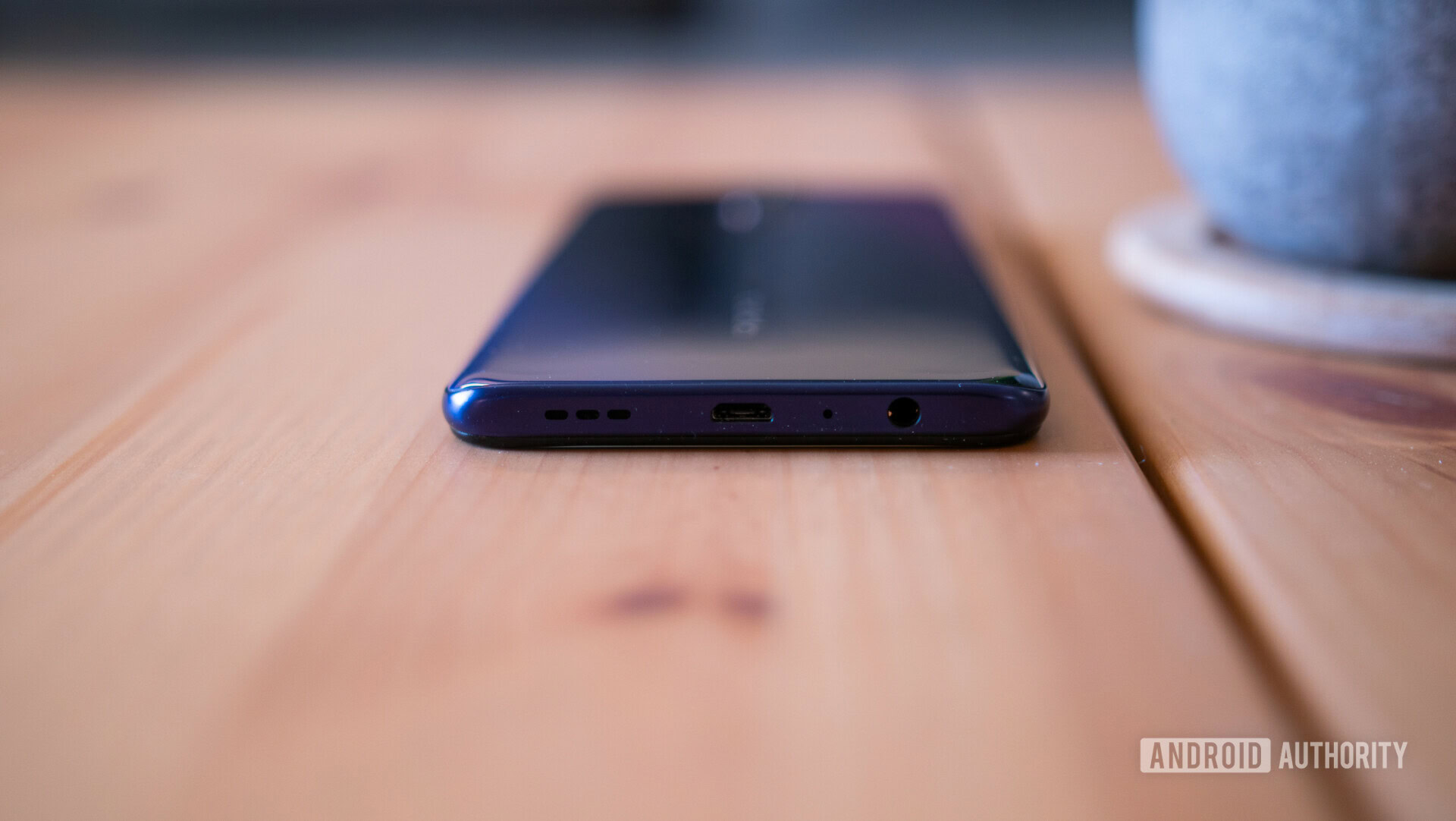
The OPPO F11 Pro comes with some old ports that are both good and bad news. There’s a headphone jack, which is always good to see on a modern smartphone. However, for some reason, OPPO has opted for a micro-USB port instead of USB-C. In 2019, having micro-USB is awkward, now that USB-C is much more prevalent. For a phone with so many forward-thinking design elements, this one felt like a step backward.
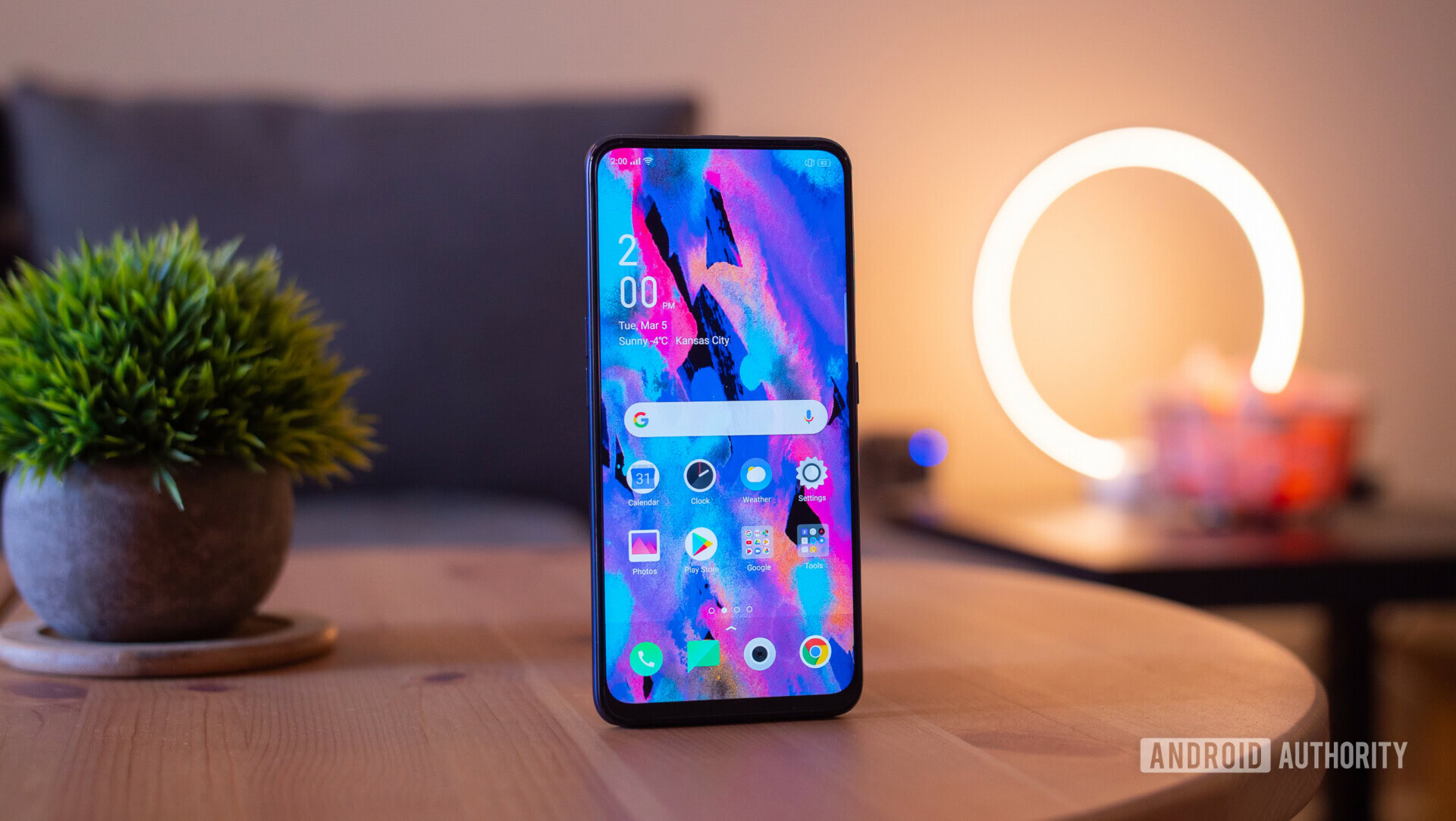
Display
The display exhibits good qualities overall with fantastic colors, great viewing angles, and good brightness.
In large part to the pop-up camera, the OPPO F11 Pro has a notch-free, bezel-less display. This results in an impressively high 90.9% screen-to-body ratio. The 6.53-inch full HD+ LCD display (2,340 x 1,080) won’t be quite as stunning as some of the higher resolution AMOLED displays found on top-tier flagships, but it still looks great. The nearly all-screen front is a joy to use for games, videos, and all sorts of other content. The display exhibits good qualities overall, with fantastic colors, great viewing angles, and good brightness.
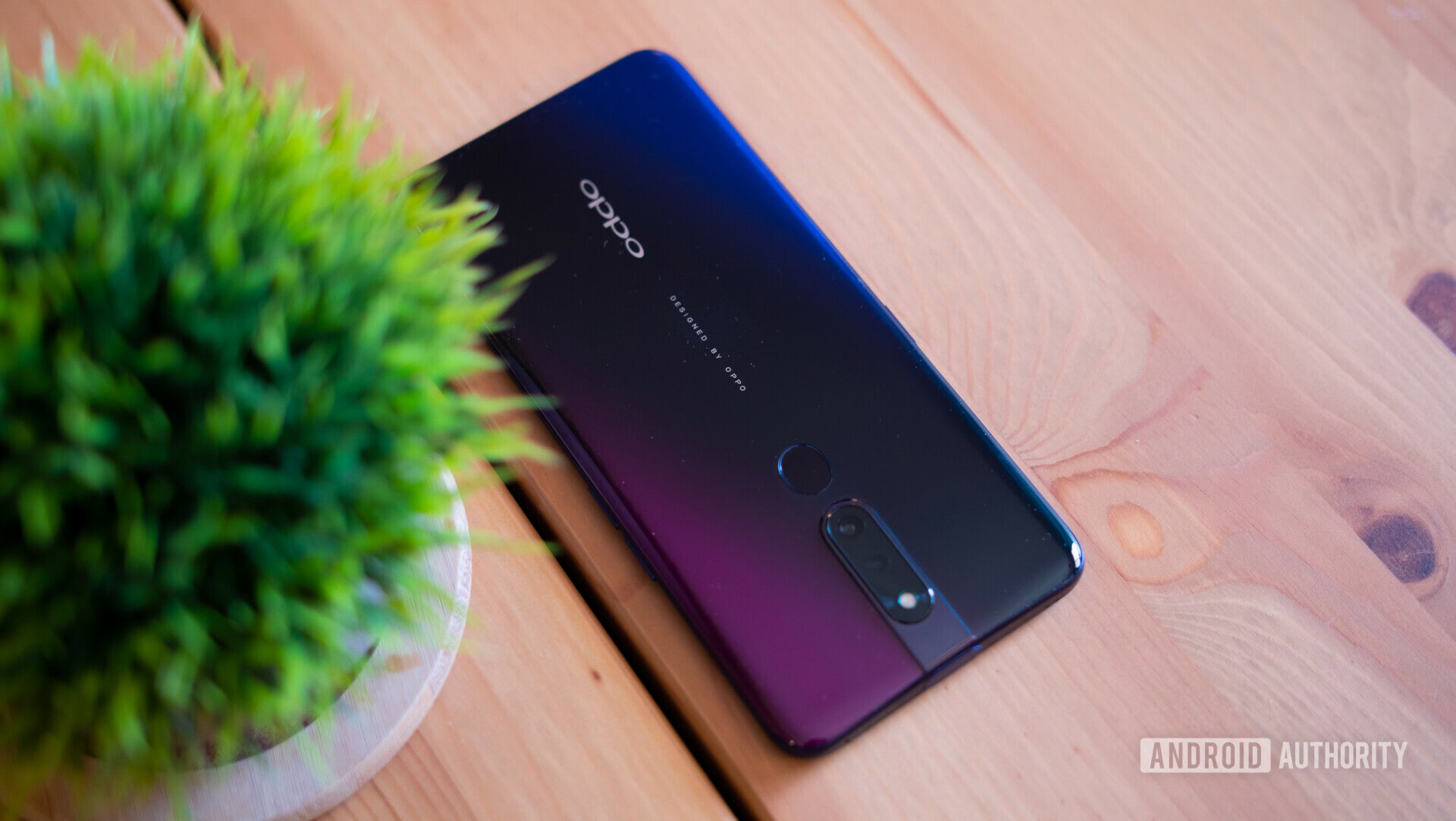
Performance
The OPPO F11 Pro is equipped with the Helio P70 processor, MediaTek‘s latest mid-range chipset and 6GB of RAM. It’s not the most powerful set of internals, but the Helio P70 is a more than adequate chipset and offers a 13% performance boost over the previous generation P60. In everyday use, our OPPO F11 Pro review unit has offered a fluid experience. Apps are quick to load, navigating through the interface is smooth and responsive, and multitasking between apps poses no issues. Gaming on the F11 Pro is also a great experience. Graphically demanding games run very smoothly with no signs of stuttering or lag.
OPPO has developed its own performance acceleration engine called Hyper Boost for more responsive performance in daily operation and in gaming. It can intelligently allocate system resources for an improved gaming experience. Currently, there are 11 popular games, including PUBG and Arena of Valor, that are specifically optimized for Hyper Boost.
One of the more impressive specifications is the OPPO F11 Pro’s large 4,000mAh battery. The F11 Pro also comes with VOOC 3.0 fast charging, which can charge the phone to full in about 80 minutes. In addition to fast charging, the display has its own RAM, which is designed to help with power consumption, though it’s difficult to gauge how much of an impact this actually makes.
The 4,000mAh battery lasts a very long time, as expected. I’ve had no issues making it through a full day’s worth of social media, emails, YouTube, gaming, and some light web browsing. The F11 Pro makes it to the wee hours of the night comfortably and I haven’t had the need to charge it midway through the day. On several occasions, I didn’t recharge the phone until early the next morning. I would love to show you some screen-on time numbers, but OPPO’s software doesn’t show this statistic for some reason.
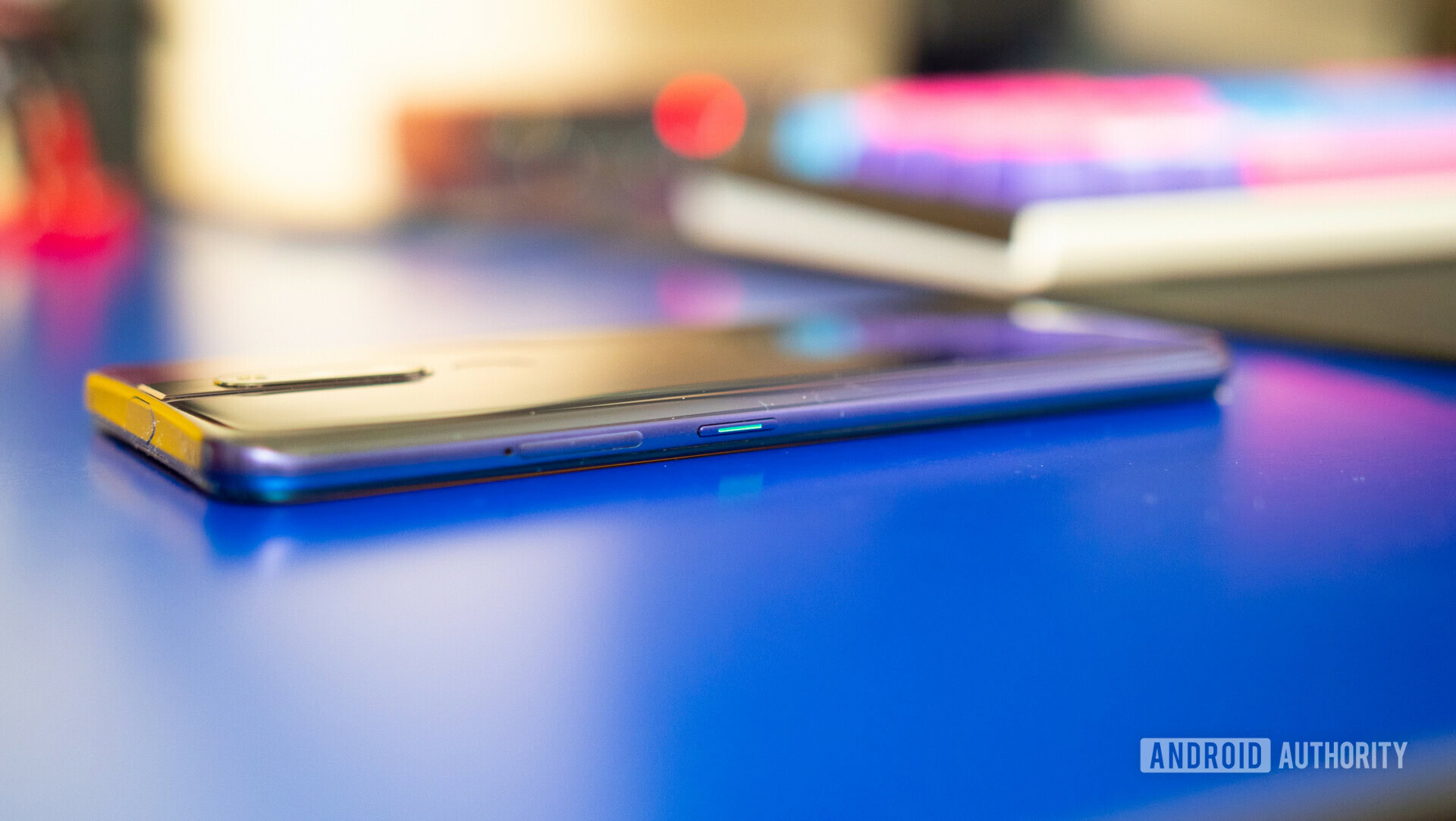
Hardware
Hardware wise, the OPPO F11 Pro doesn’t come with too many bells and whistles. Storage comes in 64 and 128GB options, but there’s no microSD slot for expandability. There’s also no wireless charging, despite the phone having a glass back. A single speaker is on the bottom edge of the phone; it sounds fine and gets loud enough for YouTube or music, but it’s not anything special. The fingerprint sensor is on the backside, and again is nothing to write home about, but it’s very fast and accurate to unlock.
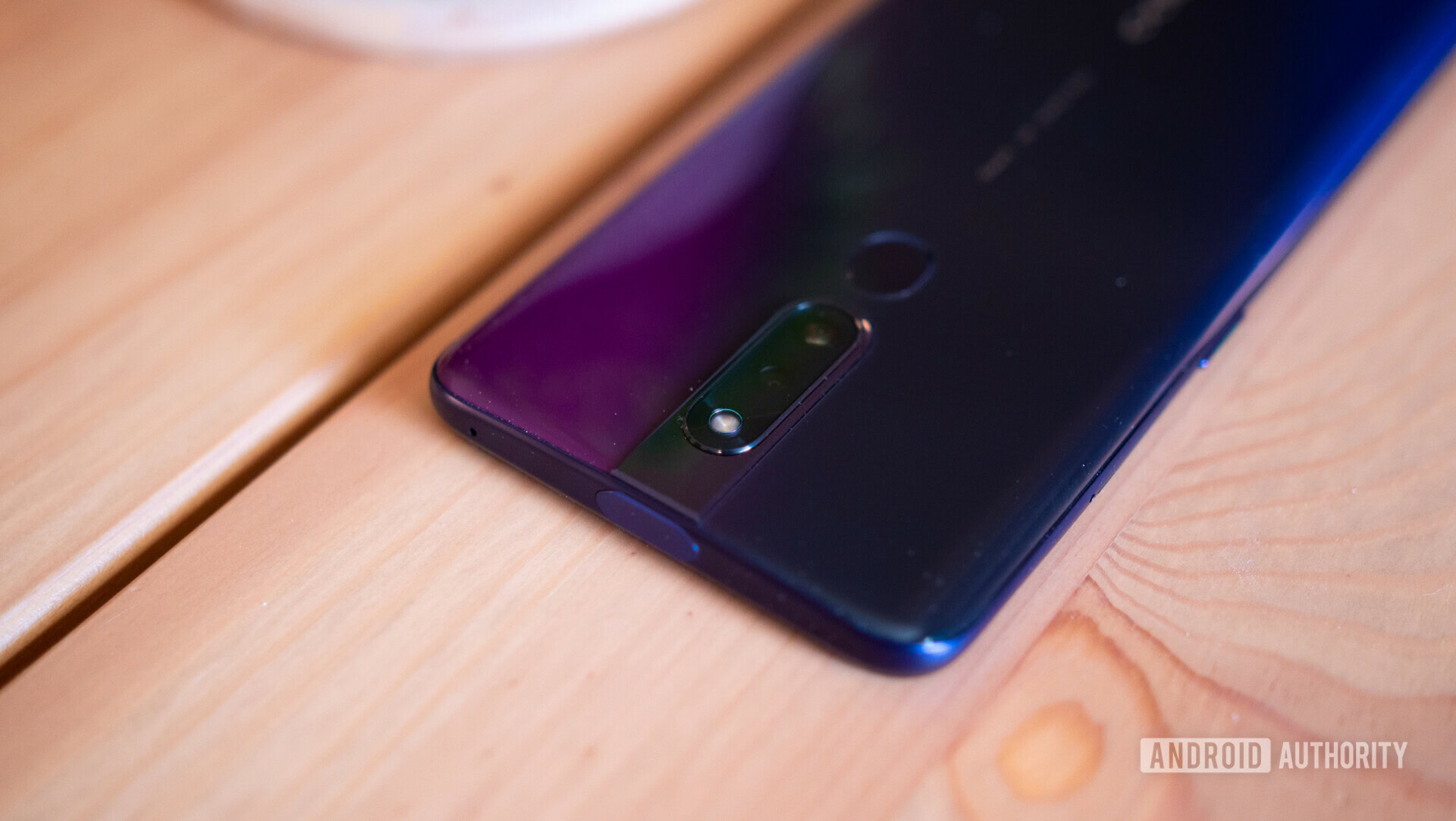
Camera
The rear camera has an Ultra Night Mode for improved low light and AI scene recognition that can recognize a total of 23 scenes and 864 combinations.
The cameras on the OPPO F11 Pro are probably the most eye-catching pieces of hardware because of the pop-up mechanism and the sheer number of megapixels. The front-facing camera is 16MP with f/2.0 aperture and the primary rear camera is a 48MP shooter that’s paired with a 5MP depth sensor. Both front and rear cameras support portrait mode. The rear camera also has an Ultra Night Mode for improved low light performance and AI scene recognition that can discern between a total of 23 scenes and 864 combinations.
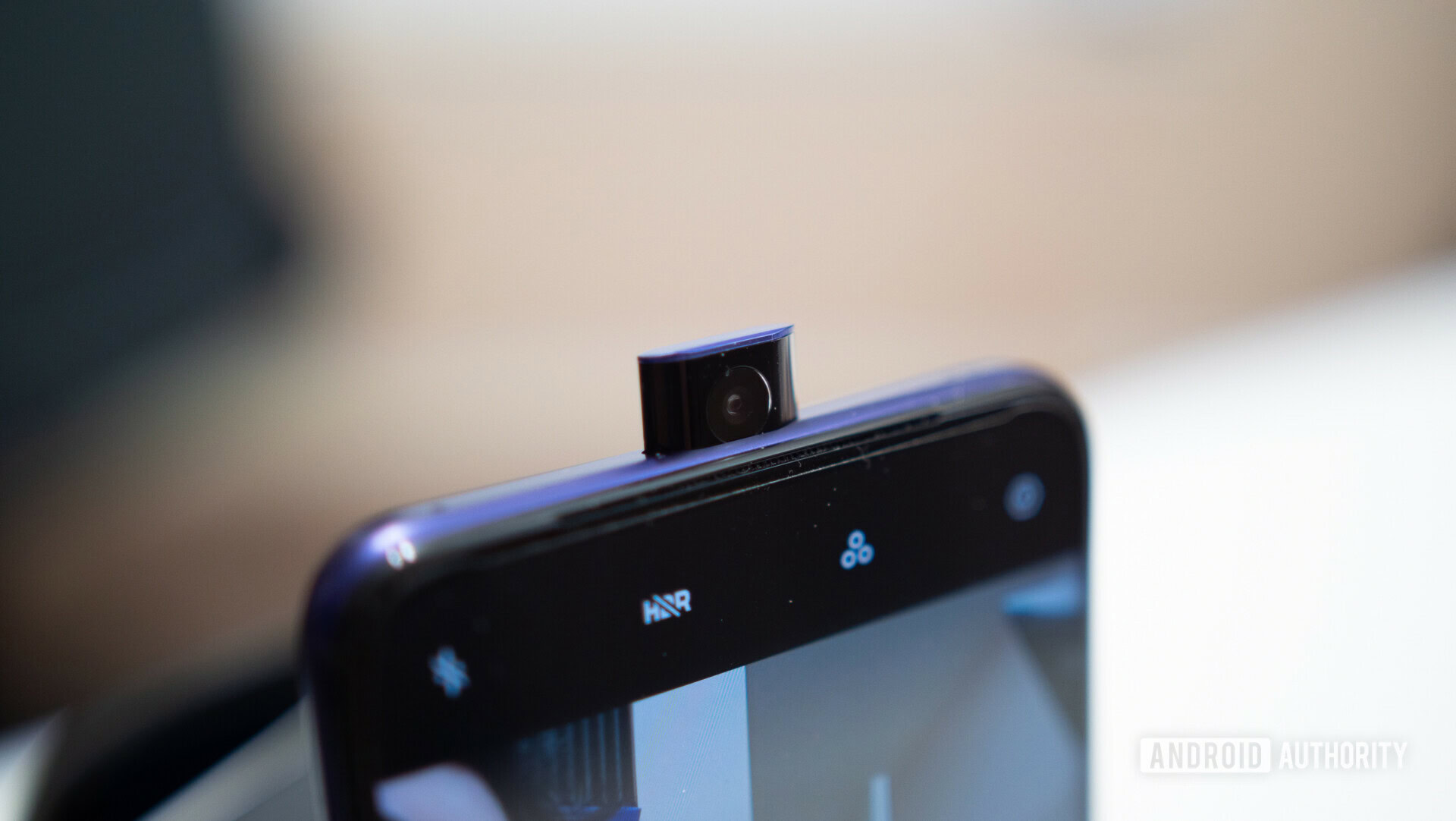
Selfies from the front-facing shooter are sharp, crisp, and skin tones are handled well with a natural appearance. Portrait mode photos are convincing enough, despite there only being one lens on the front. There’s good separation between the subject and background and, most of the time, you won’t find any mistakes that make the shots look artificial.
By default, the rear camera is set to 12MP because the camera uses pixel binning for better low-light performance. If you want to take full 48MP resolution photos, you’ll have to change it in the settings but you will lose out on some features, namely digital zoom, HDR, or AI scene recognition.
Aside from the higher resolution and a slighter sharper image, you aren’t gaining much when shooting at full resolution. Results are much more impressive when shooting at 12MP due to the camera’s ability to leverage HDR and scene recognition for better color and detail. The pixel binning on the F11 Pro, however, doesn’t seem to make a huge impact in low light, compared to other phones that use the same technique. I noticed next to no difference between the 12 and 48MP stills that I took in low light.
The low light improvements are only noticeable when using Ultra Night Mode. This leverages AI and multi-frame noise reduction resulting in brighter shots, more highlight and shadow detail, less noise, and better dynamic range. OPPO hasn’t made clear which 48MP sensor is in the F11 Pro but we’re willing to bet it isn’t the Sony IMX586.
We’ve included a full gallery of photos below for easy viewing but you can click here to see the full resolution images.
Software
The OPPO F11 Pro ships with Android 9.0 Pie and ColorOS 6 software. Having the latest version of Android out of the box is always great, and aesthetically ColorOS is not very offensive. OPPO makes good use of colors without being overly bright or cartoony and the app icons blend in well with regular everyday Android apps. I also like that the shortcuts and the brightness slider in the notification shade are nice and large, which makes them easy to press.
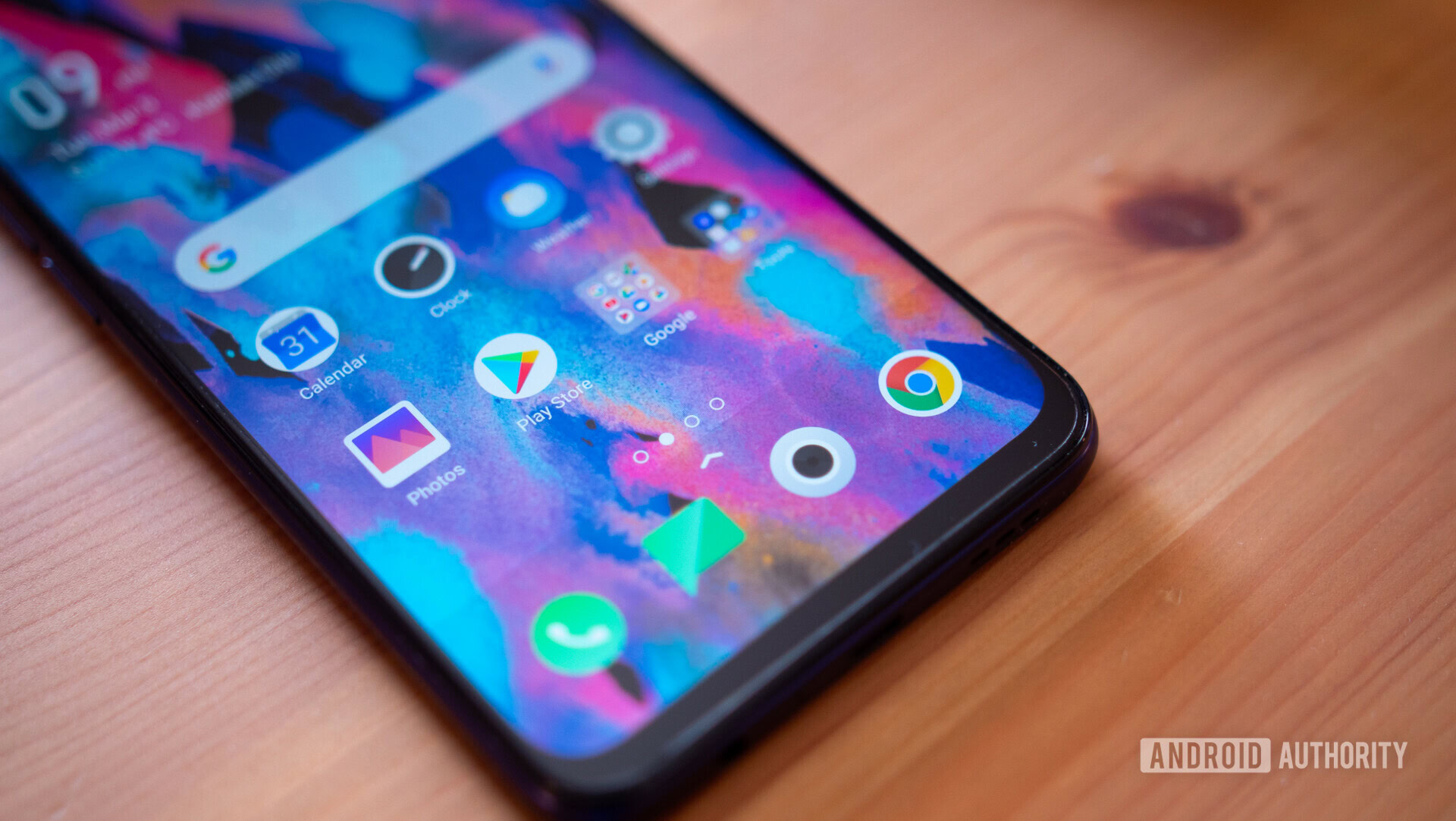
OPPO has optimized the UI to take advantage of the F11 Pro’s edge-to-edge display. Instead of cutting off at the notification bar like most apps tend to do, OPPO’s own applications extend to the edges of the display, giving the applications a borderless look. ColorOS also has its own navigation gestures to further the full-screen experience, but you have the option to use Android Pie’s gestures if you prefer.
Other useful features of ColorOS 6 include the Smart Assistant and the Smart Bar. The Smart Assistant is OPPO’s take on what should live on your leftmost home screen and can be used to show pertinent information such as the weather, calendar events, and a step tracker. The Smart Bar is accessible by swiping in from the edge of the display. This provides quick access to customizable app shortcuts and useful system functions such as screenshot and screen recording.
OPPO F11 Pro specifications
| OPPO F11 Pro | |
|---|---|
Battery | 4,000mAh, micro-USB (with VOOC 3.0 fast charging) |
Cameras | Rear: 48MP+5MP(Ultra Night Mode, AI Scene recognition, Color Mapping) Front: 16 MP, f/2.0 |
Colors | Thunder Black, Aurora Green |
Connectivity | WLAN 802.11 a/b/g/n/ac, Bluetooth 5.0, NFC |
Dimensions | 161.3 x 76.1 x 8.8 mm |
Display | 6.53-inch 2340*1080,TFT, 19.5:9, Panoramic Screen |
GPU | Mali-G72 MP3 |
Headphone jack | Yes |
IP Rating | None |
RAM | 4GB/6GB |
Sensors | Fingerprint Unlock(back) Sensors: magnetic sensor, light sensor, distance sensor, gyroscope, gravity |
SoC | MediaTek Helio P70 |
Software | Android 9.0, ColorOS 6 |
Storage | 64GB/128GB (no microSD support) |
Weight | 190 g |
Networks | (Depending on markets) 4G/4G+: TD-LTE, LTE FDD; 3G: WCDMA,TD-SCDMA,CDMA2000 2G: GSM,CDMA |
Pricing and final thoughts
The OPPO F11 Pro goes on sale in India starting March 15, followed by markets in Southeast Asia, the Middle East, and North Africa. The F11 Pro will be priced at 24,990 rupees (~$354) for the 64GB version with 6GB RAM. The F11 Pro’s biggest competitor will be the vivo V15 Pro, which offers similar hardware, a pop-up camera, and costs around the same price.
The F11 Pro is an excellent option in regions where it’s available. It’s not the most powerful smartphone in terms of raw specifications, but it offers some head-turning hardware with its pop-up camera, edge-to-edge display, and beautiful gradient colors. The ColorOS software is also very intuitive and the phone’s long-lasting battery will satisfy even the heaviest of users. For U.S. consumers, this phone won’t be much to get excited about, but if history is any indication we’ll most likely see much of the F11 Pro’s DNA injected into the next OnePlus flagship.
And that concludes our OPPO F11 Pro review. Thoughts on this phone?